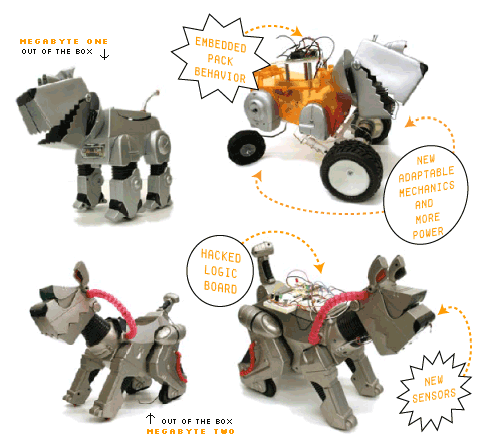
Just in time for the holiday season comes an exhibition inspired by the heartwarming Brian Aldiss short story "Super-Toys Last All Summer Long" in which a robotic boy is deceived into believing he's human and loving his fake mom. It's a tale for the ages. And now Bristol's Arnolfini gallery has mounted "Supertoys," a chance for a group of artists to flesh-out the fakery behind humans' relations to their playthings. In fairness, part of the show's agenda is an effort to look at how human/ object relationships can become more reciprocal as robots become increasingly intelligent and the possibility for not only learning but also emotion creeps into the picture. Codemanipulator reflect directly on the eponymous "Supertoys" story and present us with a binary toybox full of zero's and one's, with which viewers can play like building blocks. Natalie Jeremijenko's Robotic Geese and Ducks (2008) and Feral Robotic Dogs (2005) prompt us to remember puppy love and other animal affections while considering the important social roles played by these creatures. Her dogs sniff out pollution, while the fowl illustrate the life of the decoy. Despite most of the American nuclear tests being given macho code names like "Romeo," Dunne & Raby's Huggable Atomic Mushroom (2007) brings out the softer side of these curvy explosions by making cuddly, squishy, femininely-gendered toys. This play of difference highlights the role of machine culture in cultivating or quelling paranoia and false rationality. These and other works by Chris Cunningham, Kahve Society, Alex McLean, Philippe Parreno, Unmask Group, and guest robots Swarm Systems and Heart Robot use the approachability of cute objects to address often untouchable topics, in this exhibition. - Marisa Olson
Image: Natalie Jeremijenko, Feral Robotic Dogs, 2005

